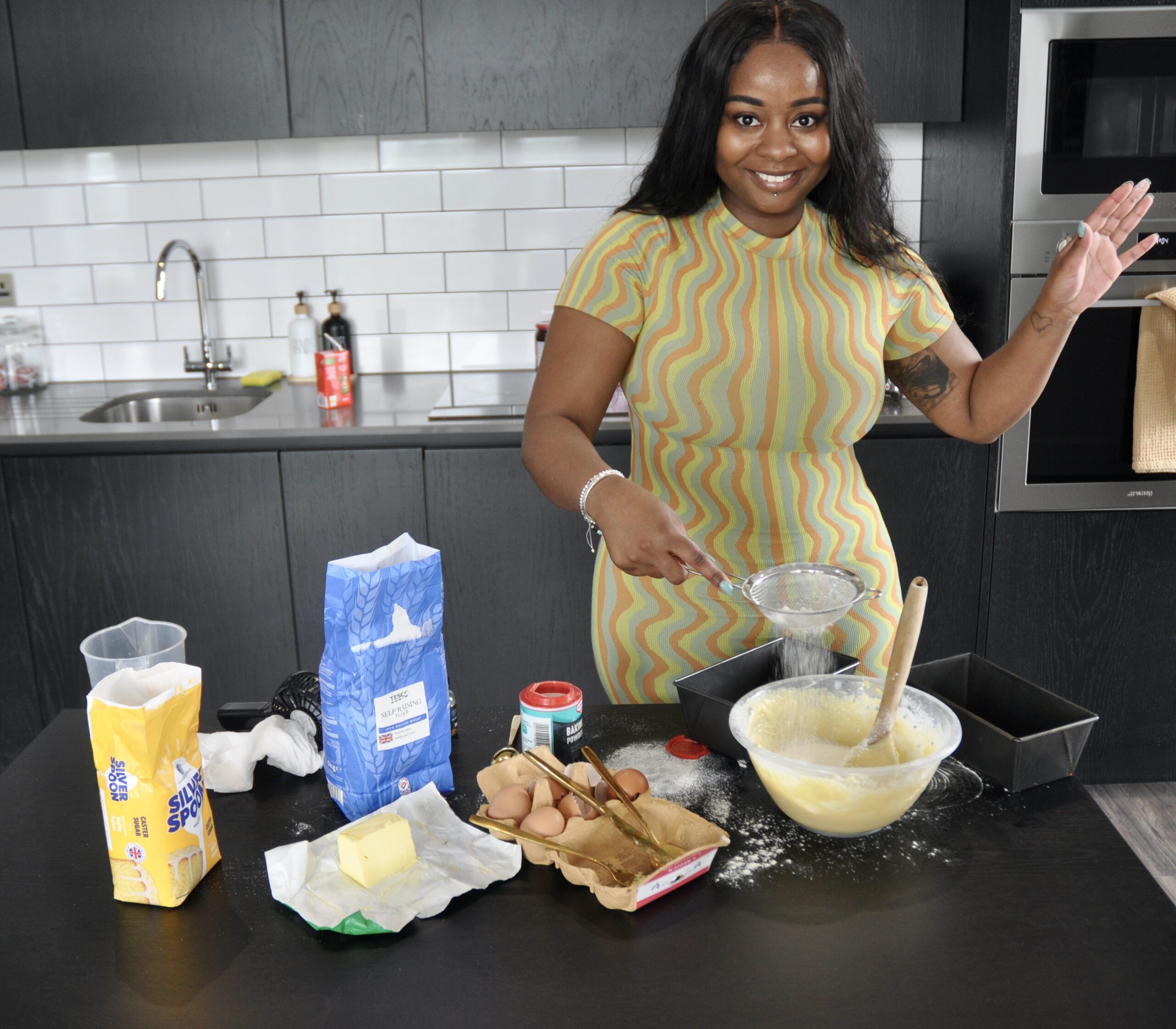Charmaine Chanakira

Using art as therapy is what enabled Charmaine into a journey of self healing and recovery. Her bold colourful expressionist paintings resonate with her multicultural journey. Born in Zimbabwe, and raised predominately in the UK with her family. She grew up with skills and ease of technology and the internet which opened a world of globalisation, with influences of Japanese Manga encompassing her African heritage and the globalisation and diversity of her influences. Her paintings focus on opposing themes, such as racism, identity, integration, and cultural diversities, like a pilgrimage into sacred places, questioning religions and philosophies using a style with brightly coloured repetitive images of facial features and symbolisms and words. Her large canvases, vibrating with colours, marks forms and texts, somewhat making up for her naturally introverted personality. She challenges her alter ego, painting and drawing, using graphite, paints, oils and acrylics working compulsively, with her passion for emblems and metaphors with an intense and bold vigour that imbues her work with excitement and energy. Yet, at the same traversing the journey of self discovery in what can sometimes be a shallow societal world that is preoccupied with image and acceptance. The messages hold your attention, as the complexity of an emotional narrative plays with bright colours on the canvas.
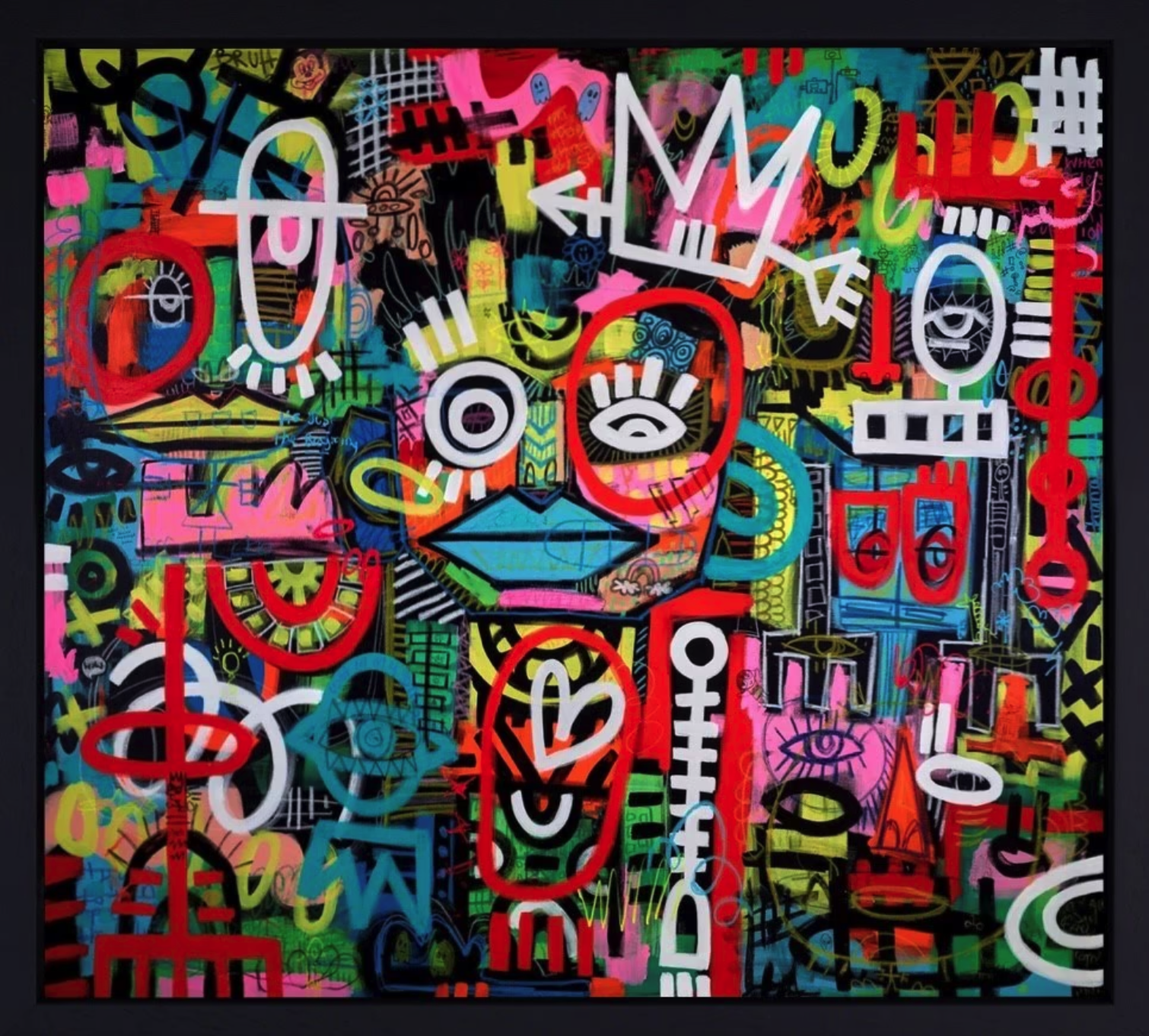

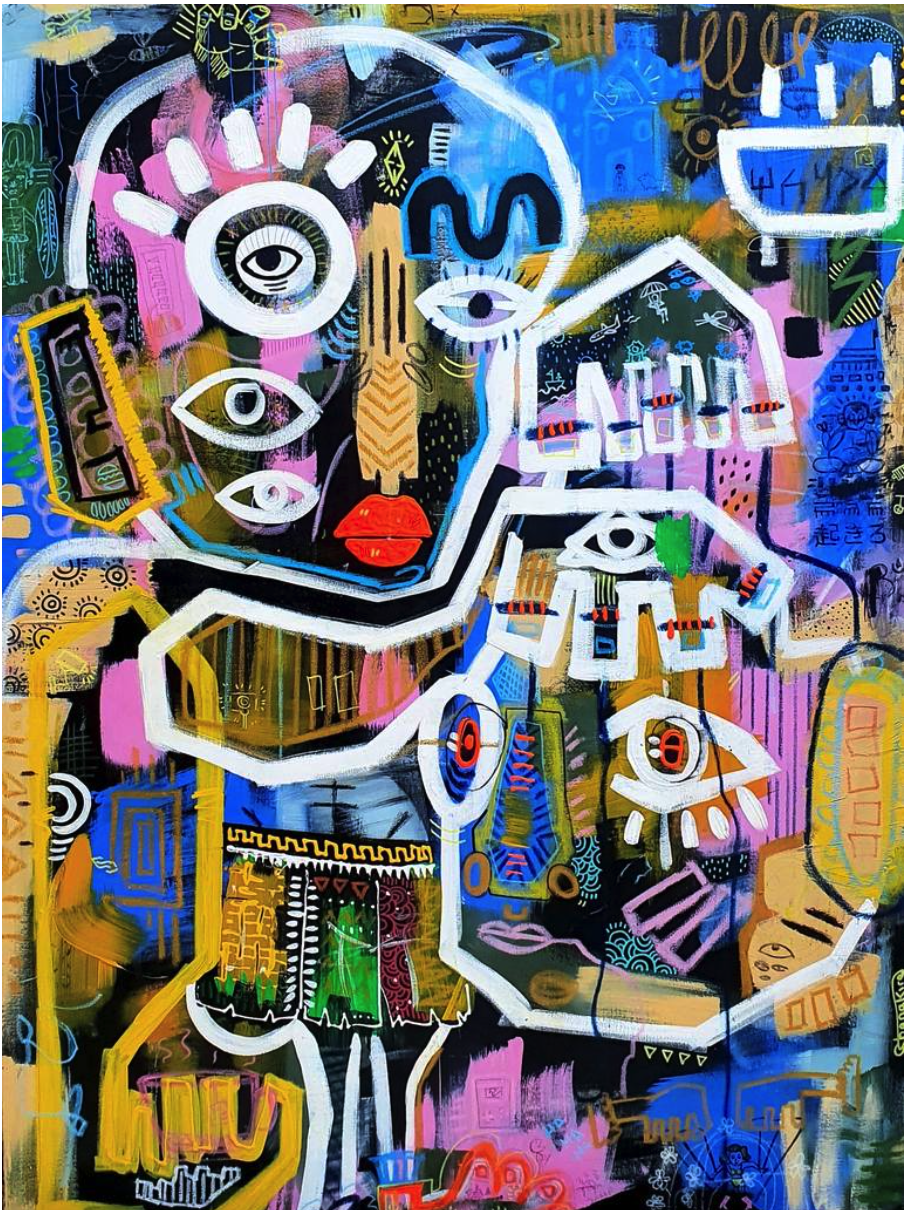
Charmaine describes how she hates being the centre of attention, although she does like to get to know her clients when she has a solo show opening. Born in Harare and immigrating to England with her family when she was just five, we discuss her earliest memories. Being different is what she recalls, and how she had to try to fit in. We talk about the earlier memories back in Harare, and she remembers a close family, playing with her cousins. The garden, banana trees, it always being hot, potholes, food and she recalls the sculptures of the Shona art.
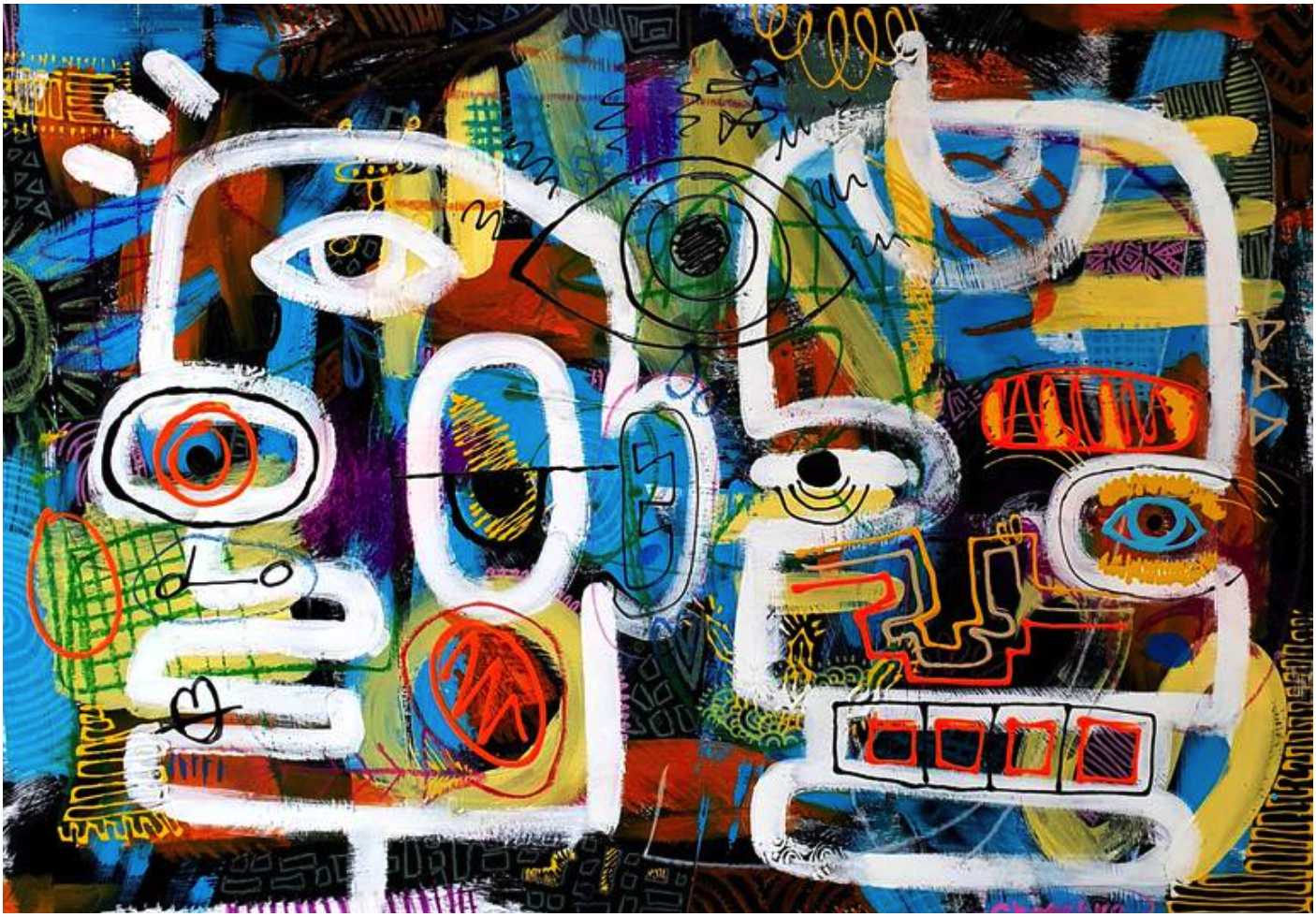
Charmaine remembers being first interested in being creative at primary school in the UK. A lot of it had to do with identity, she explains, with her name. Known at home as Charmaine, and unlike her relatives she didn’t have a traditional Zimbabwean name, but at school in Wolverhampton, she was known as Karen. It was living with these two identities that was hard for her. The first five years of her life she was always known as Charmaine and when she attended school in England she had to fit in, she wasn’t white and she was now Karen. Charmaine emphasises she could aways rely on family, always living together and being close, and that to her, family is the most important thing in her life. She describes her first school in the UK as ridiculously racist, being the only black girl of three in the whole school, where they first lived when immigrating to England. Her first language was Shona, she also heard and learnt Ndebele, as many family members spoke this language at home as well. We chat about the varying languages spoken in Southern Africa, plus the fact that many learnt English as a second language at school back in Zimbabwe. She describes learning how to simulate and avoid being a victim, especially a victim of racism.
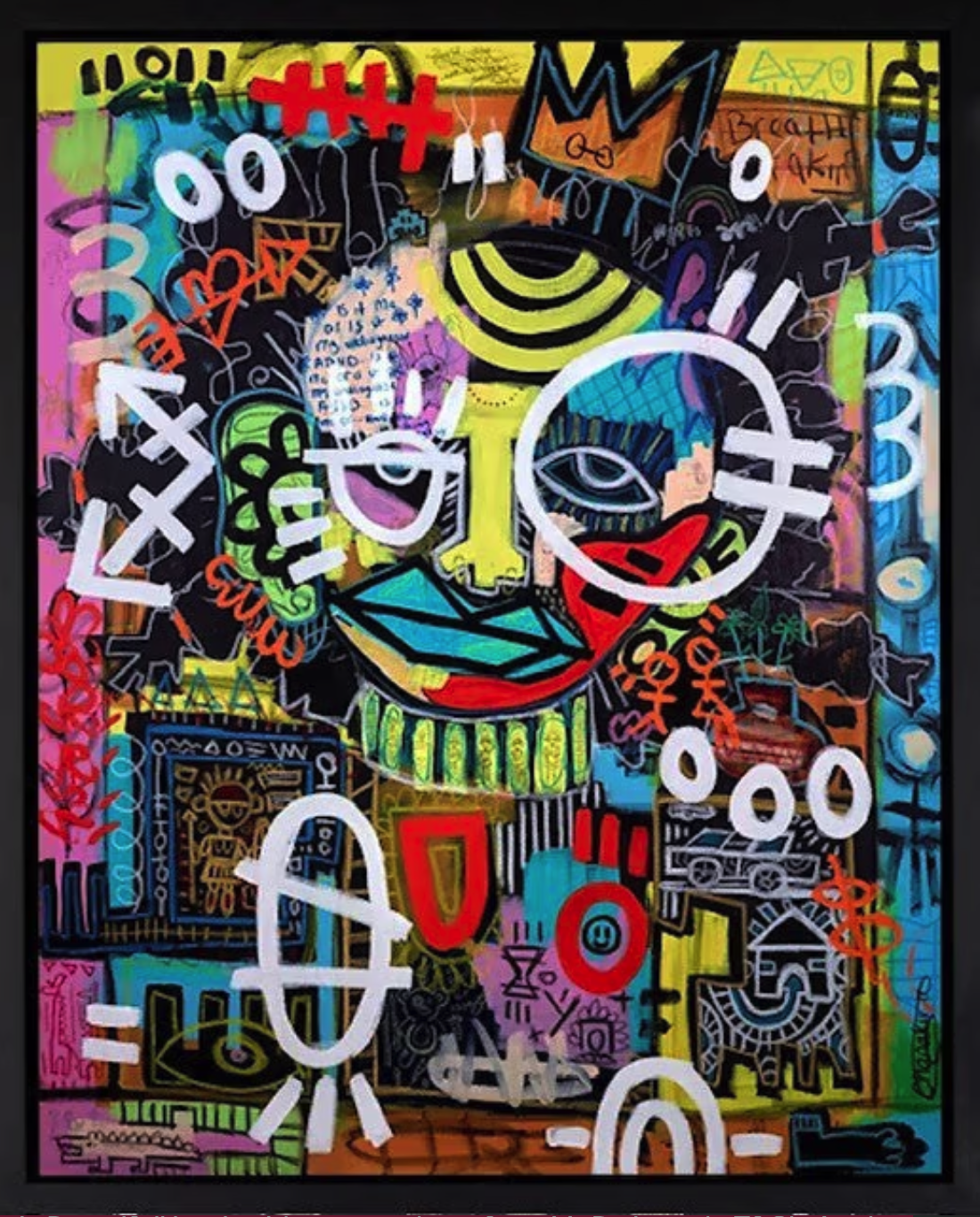

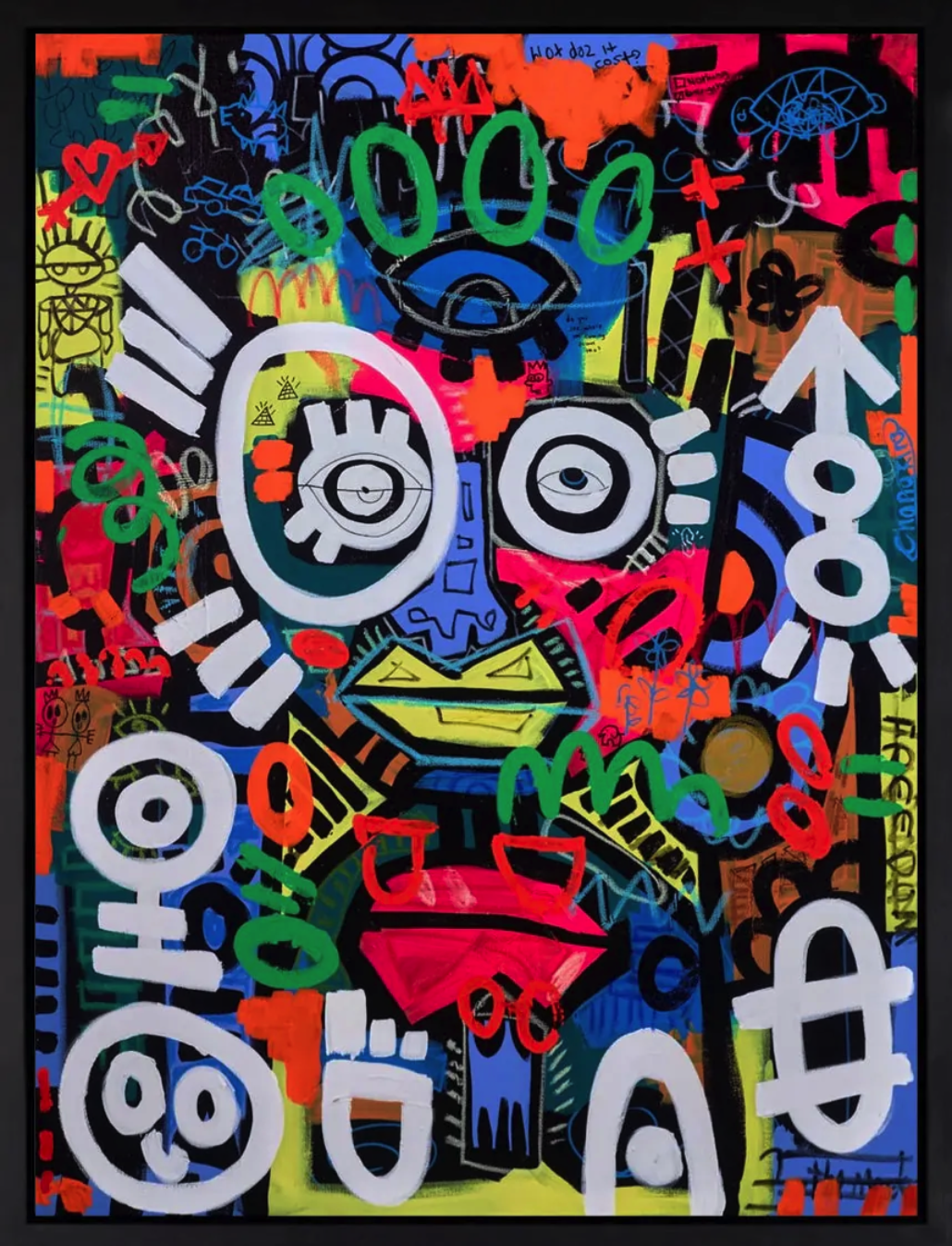
We start to talk about her journey into the arts and Charmaine tells me about her love of cartoons, Tom and Jerry and specifically Japanese animation such as Sailormoon and Beyblade. She embarked on a journey of exploration deep into Japanese pop culture, she also enjoyed the different, colourful, quirky and strange things, like Punk, and at one point she rejected her African culture. It was when she took her GCSE’ subjects which included media, textiles and art. Her art teacher did not encourage her to pursue Fine art, instead pushing her into graphic design, because she was considered an ideas person. The topic of our conversation took an almost impulsive turn as we talked about concepts, ideas, concept art, Damian Hirst and his Shark in a fish tank and Tracey Emmin’s bed, when Charles Saatchi broke the mould here in the UK with contemporary art. The only support Charmaine felt, was the support she got that she could succeed in a more illustrative way, drawing cartoons, and she thought she would be an animator. Her A-level subjects included Philosophy, textiles and art, she recalls that she liked ideas, and “Breaking the universe apart” she emphasises, enjoying Religious education; and although she considered herself as spiritual, it was reading philosophy and Religious studies which helped her make sense of it all, and how she ended being an artist. “It made me think of the universe a lot deeper, and break down ideas of religion”, Charmaine talks about her catholic upbringing, and people’s different perspectives on religion, and how these thoughts came first. Describing how she rebelled against religion, and how philosophy helped her make sense of life a lot more.
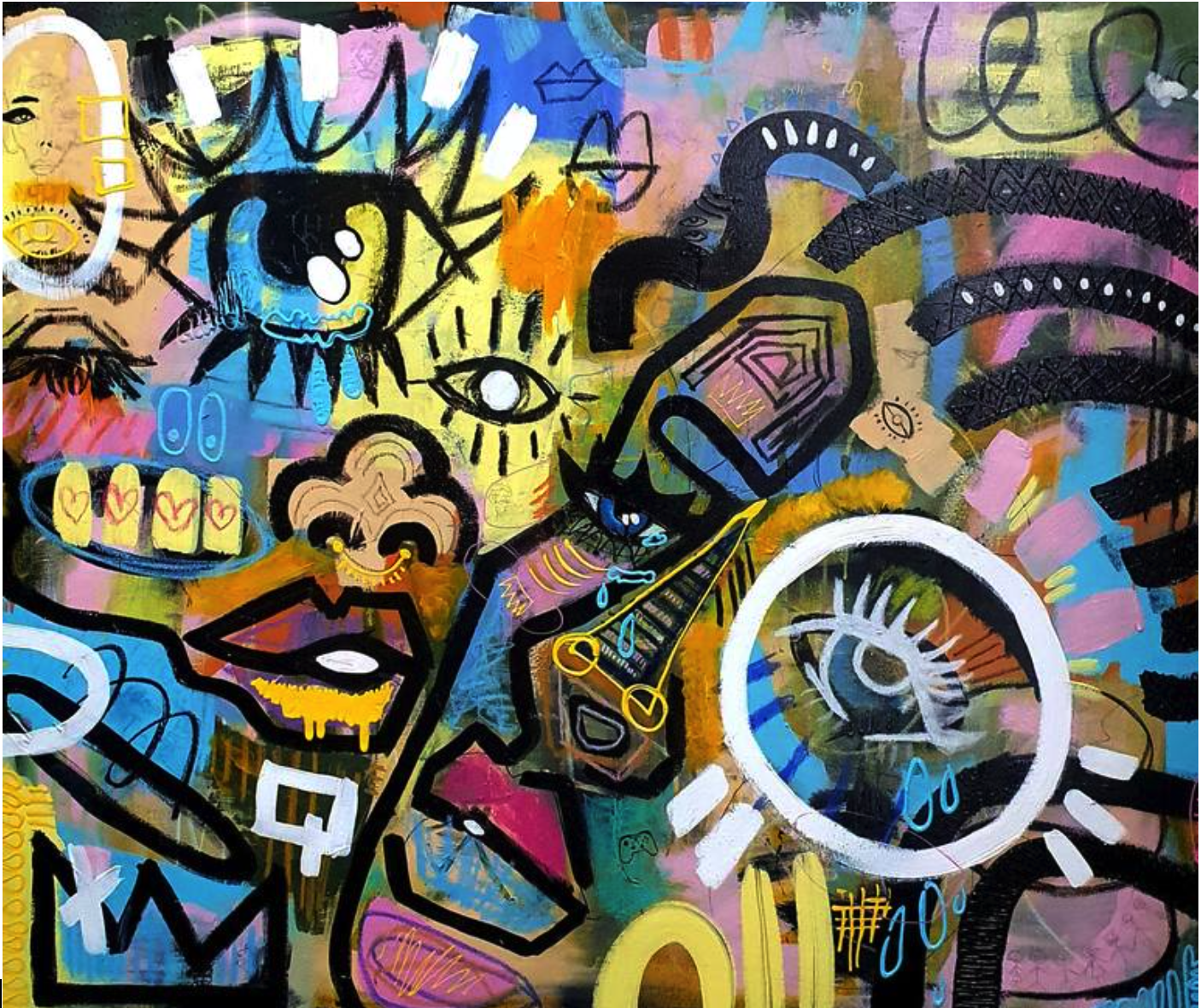
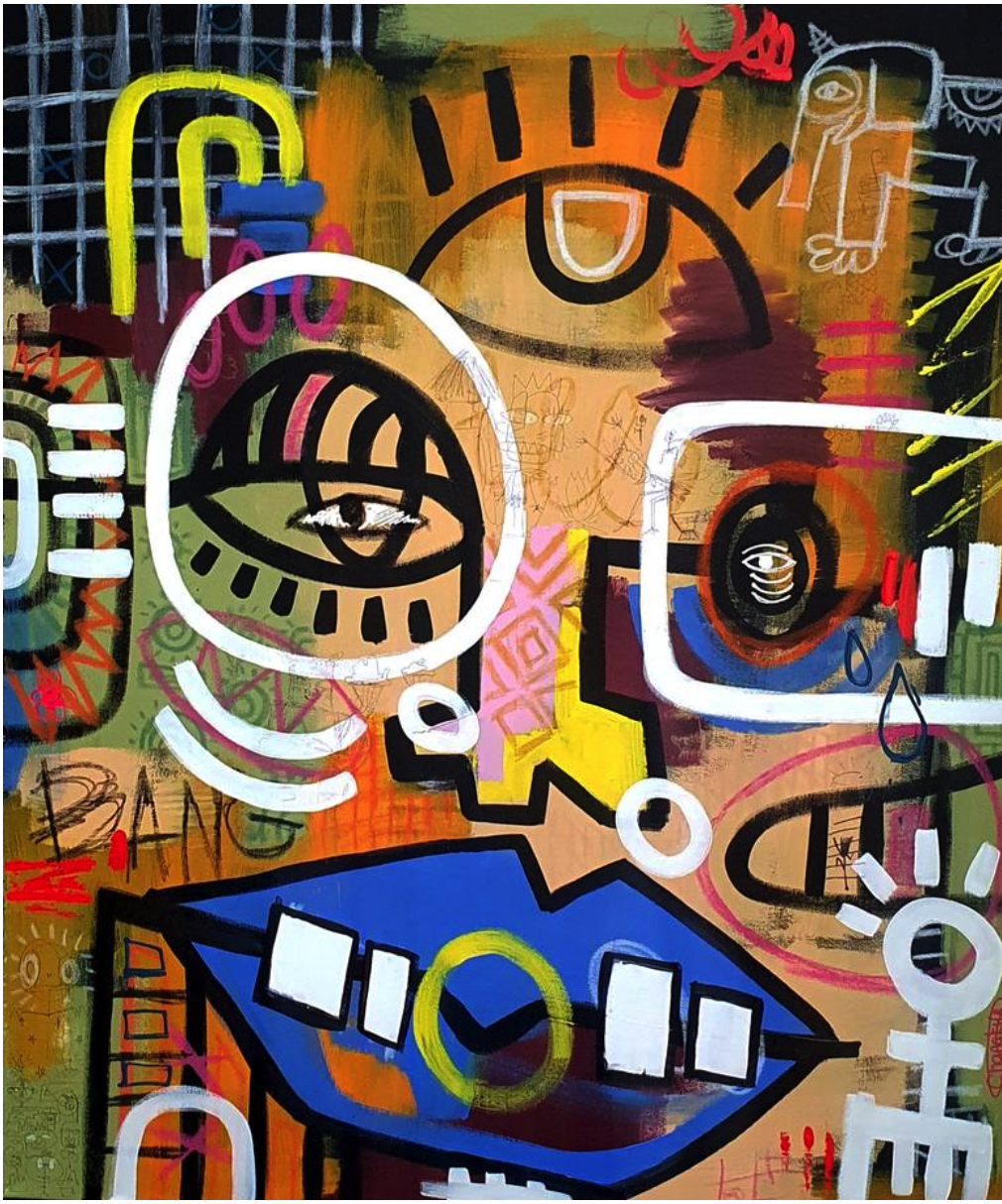
Charmaine describes the evolving journey in her career path and how she thought of being a fashion designer, she enjoyed making things. It was after university that she went straight into freelance work, she worked in graphic design, as well as making illustrations, for companies such as the BBC, online news articles and advertising agencies. This independent streak, extended when she started her own business, a Phone Case company, using her iPad she created her own original quirky Japanese inspired designs, outsourcing them to a company in China, that made the mobile phone cases for her. This expanded to printing her designs on clothing, make-up bags, iPhone cases and other merchandising. The originality of her designs and branding started a copycat sensation in China, where people were making fake replicas of her designs. The whole thing became too stressful Charmaine explains, she was only 24 at the time, and eventually closed the business down. She explains that the reason she started the business was to empower people like herself.
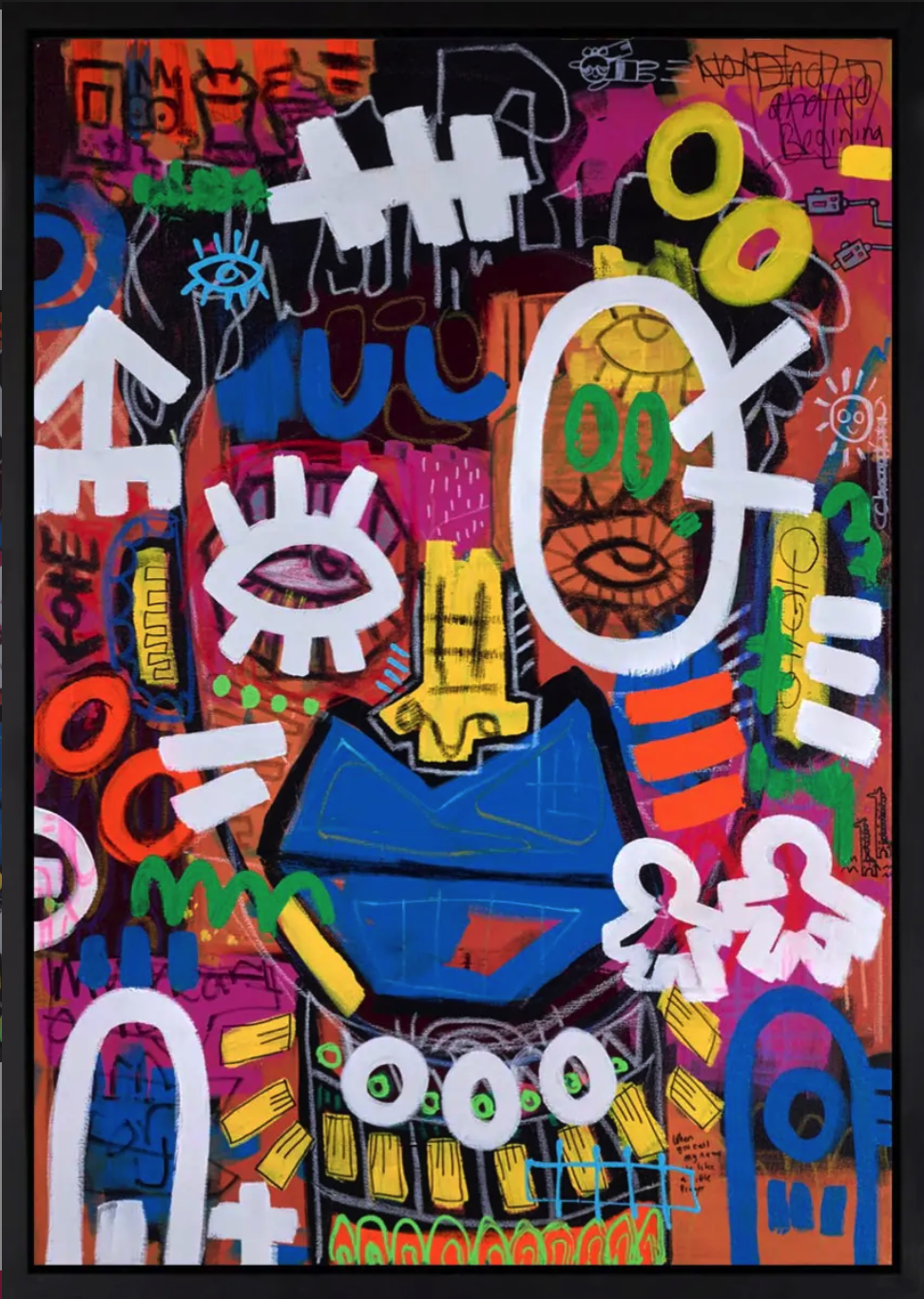
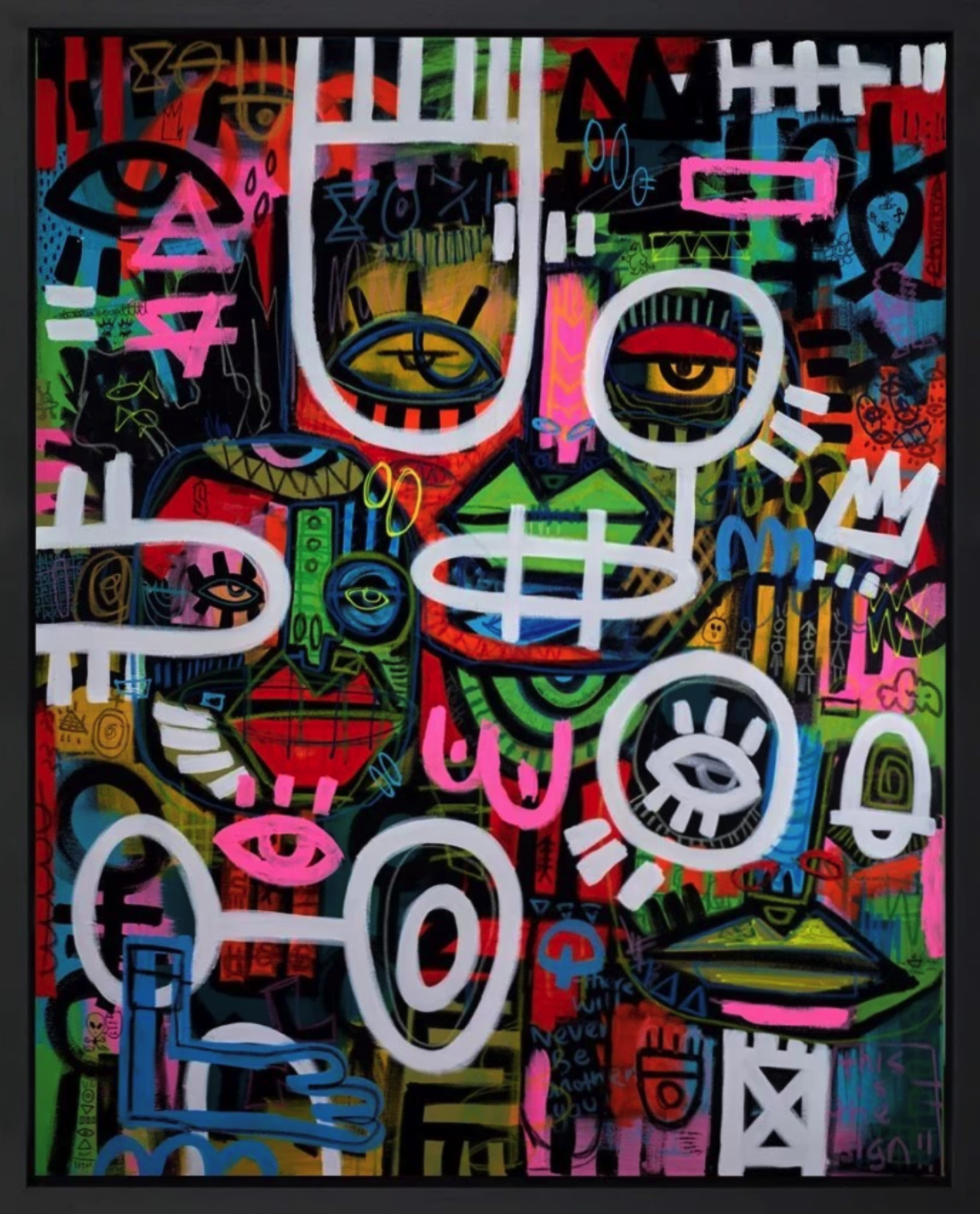
She always knew she had to work for herself, she describes she always felt unemployable, and that she was not good with rules. Heartbroken with the closing of her business she quit social media and closed down her whole operation. Her life took a turn, when she became ’employable’ taking over from her sister’s position whilst she was on maternity leave, working in IT. We laugh at my surprise, as we chat about her work as an operations analyst for one year. “My mother worried for me, she wanted me to have a stable job with a clear trajectory,” Charmaine tells me. She describes her experience in office work, as being a sort of agony art and how she enjoyed helping people. So she went back to school and took a Foundation course followed by a Masters in Art Psychotherapy for four years. “This is when it all started to kick off”. Charmaine became aware of how heavily depressed she had been working in IT.
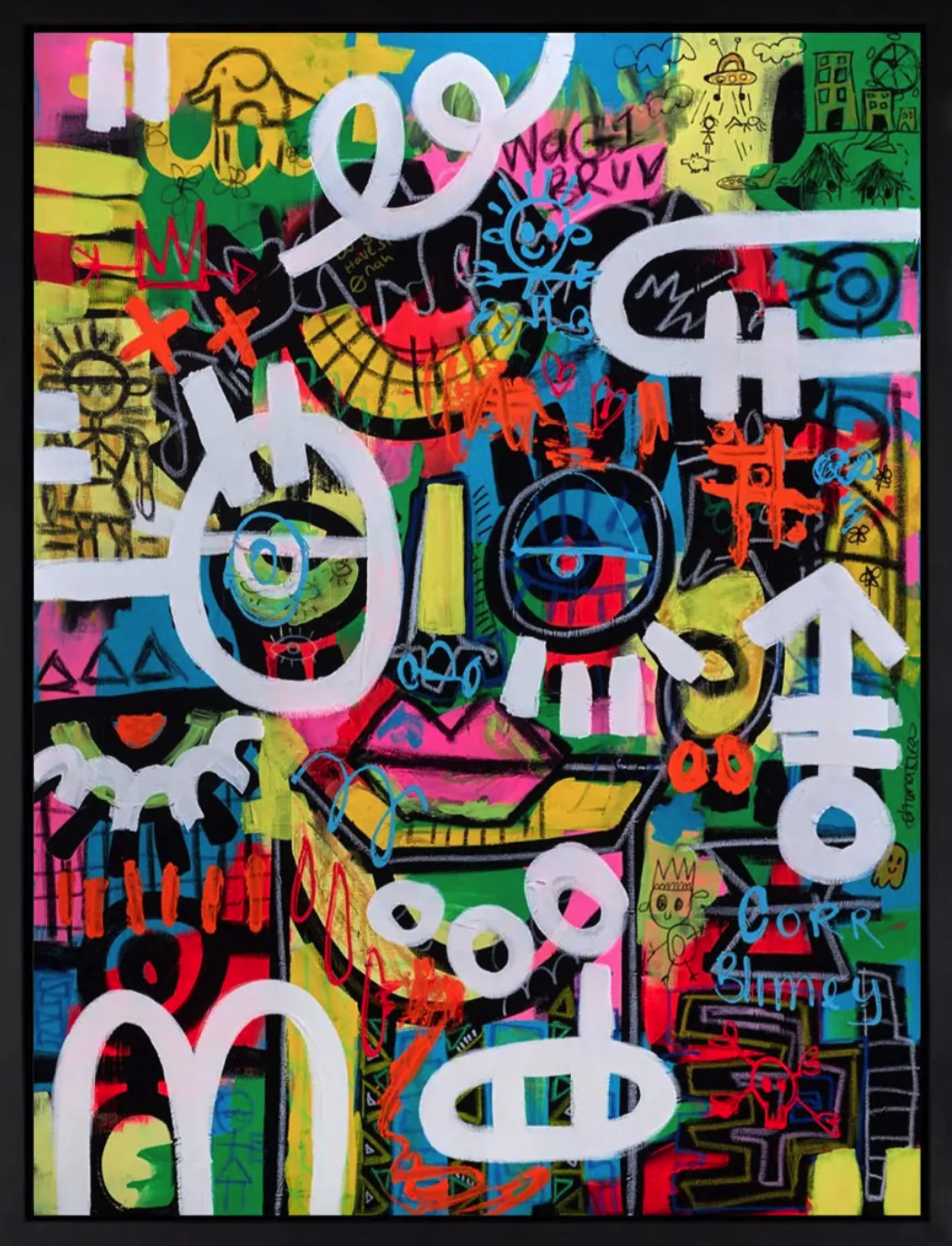

Her Foundation encouraged her to play around with art, however she had the idea of perfection ingrained in her, from working in graphic design. She felt she couldn’t paint “Everything looked like rubbish to me, it was all stress-inducing. I was simulating,” Charmaine explains, all her paintings were portraits of white women.” Charmaine explains, this was due to her conflicting ideas of identity and internalised racism. It was once she started enjoying the process, making a mess, and not trying to make something aesthetically pleasing. “It’s all about mark making” she explains. Working within the health care profession she notes “in Art Psychotherapy, we use art as a tool”. She explains the mental health aspect, realising that all her paintings were of the mask she carried around of herself, she wanted to get rid of ‘Karen’ and be her authentic self. The journey of healing with the Black Lives Matter movement and her artwork, she describes as the real awakening moment in her life.
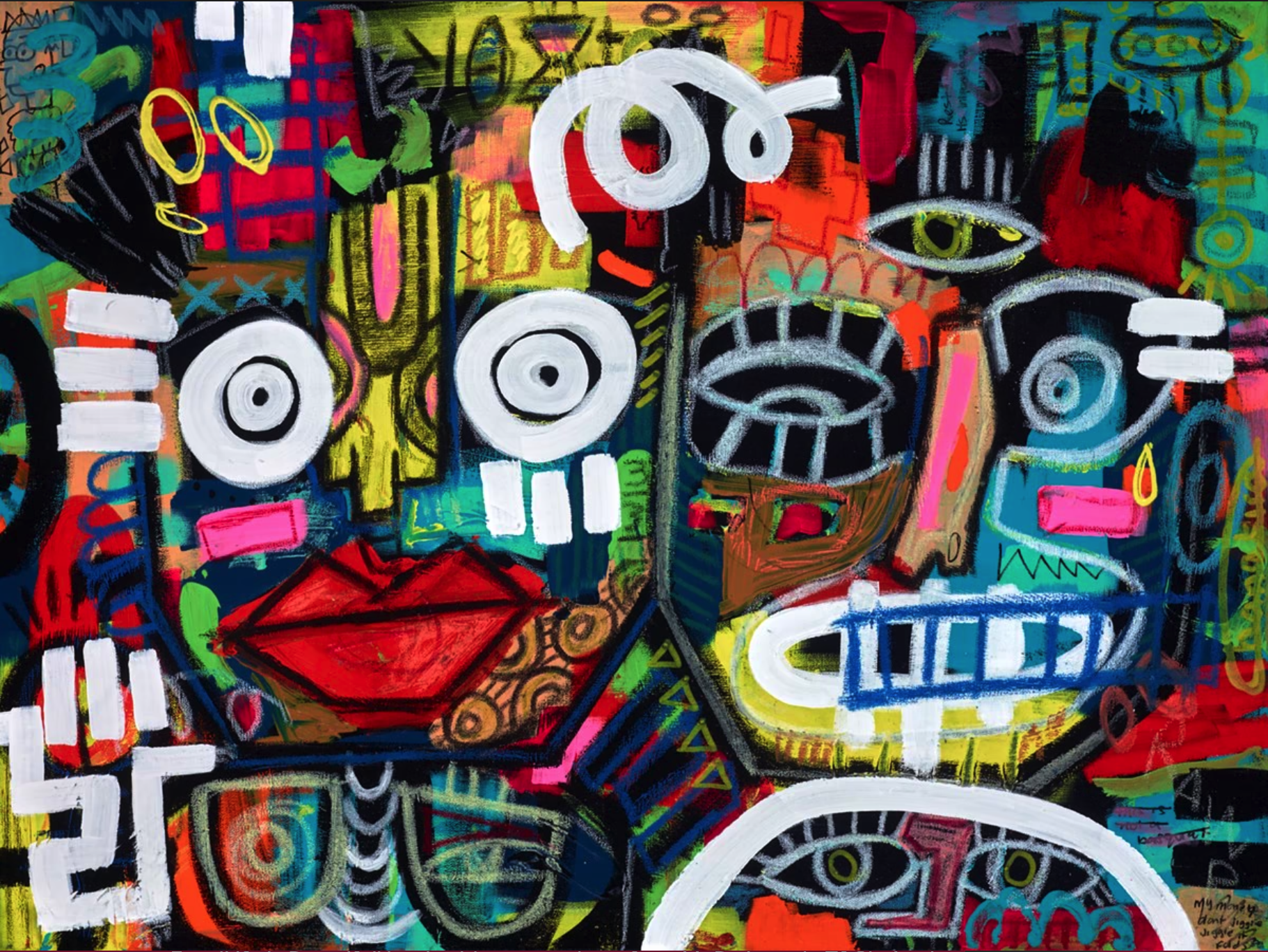

I asked Charmaine if narrative was important in her work, “Absolutely!”, when I asked her what she considers her greatest achievement, “I identify as retired and want to keep that lifestyle” she said smiling, each painting, taking between a week to three months to complete. Her inspirations and favourite artists, Japanese artist Ai Yazawa, the Ghanian artist Kojo Marfo, who she describes as her unconscious mentor, Leo Manelli and hyangmok Baik.

Charmaine painted her first collection in 2019, through lockdown on her living room floor, then went back into social media, and started cataloguing her work. Her first solo show was at the Bomb Factory in Chelsea 2021, then the Other Art Fair in 2022. Her second Solo show in Dubai in 2023. Clarendon Fine Art came to see her, and recently held her third solo show, June 2024 in their gallery in Muswell Hill.
Interview: Antoinette Haselhorst
